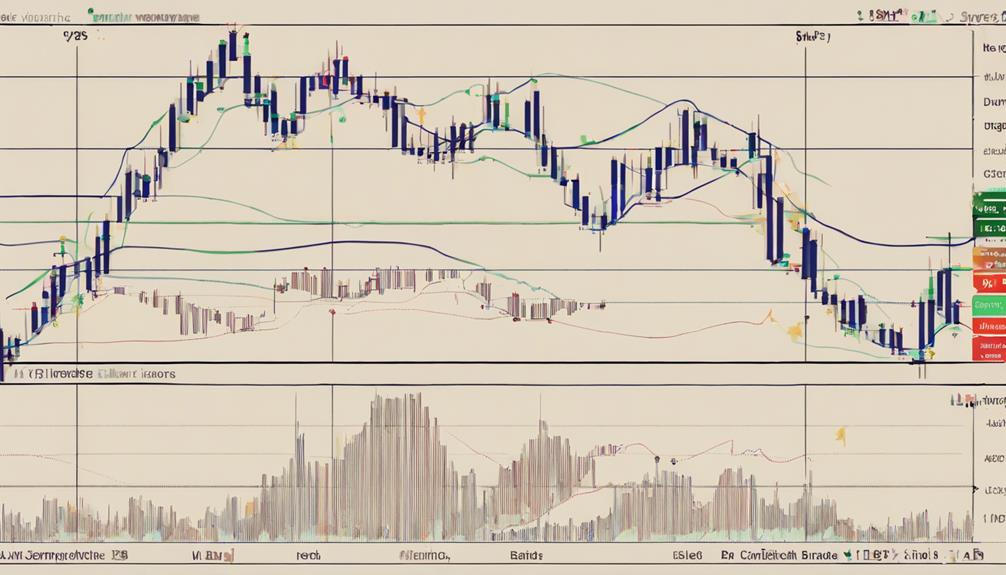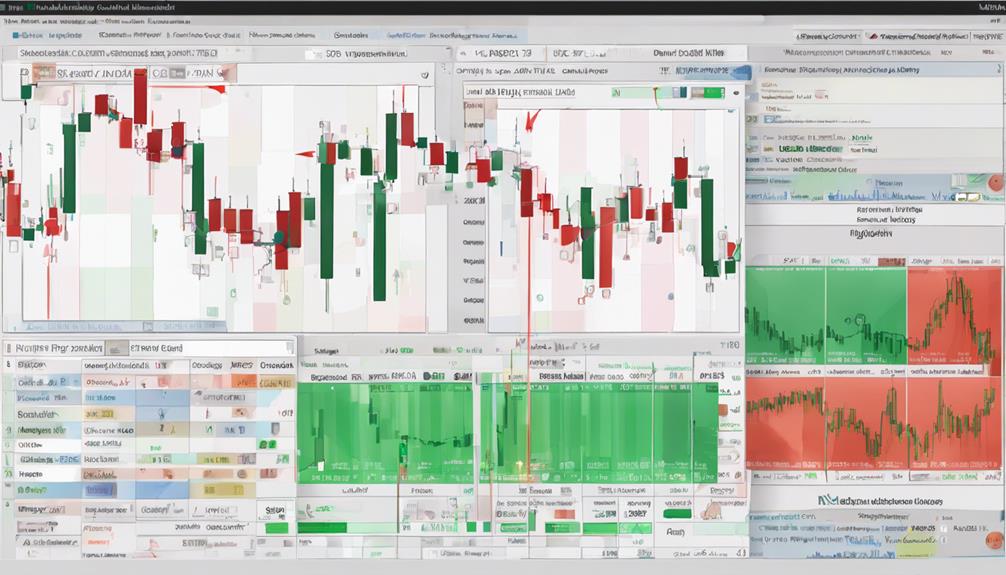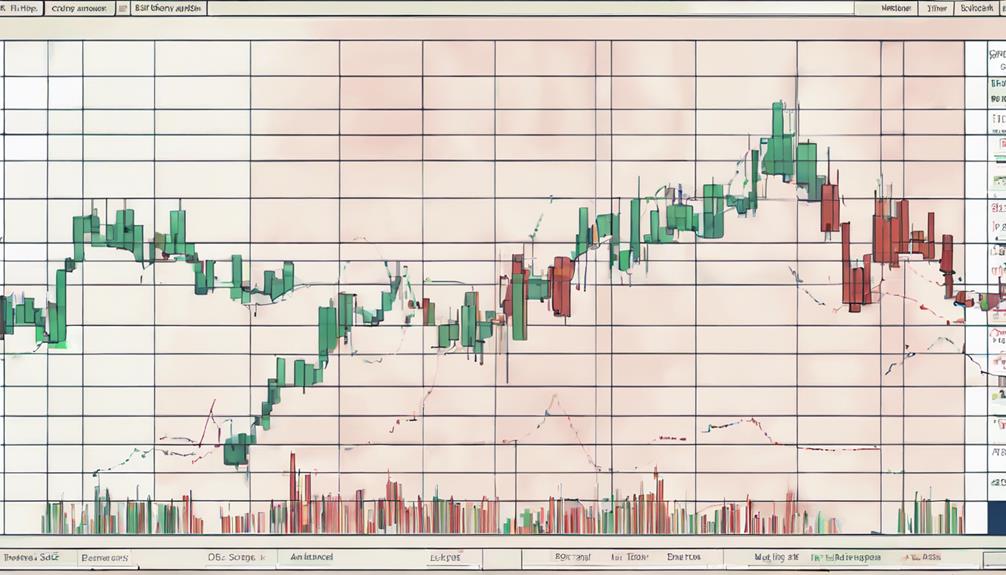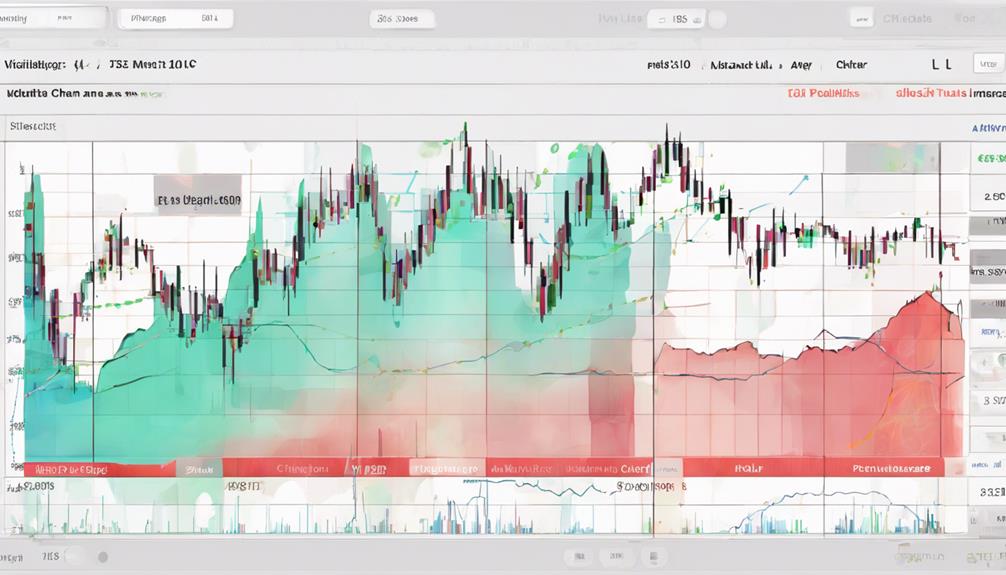Volatility indicators play a pivotal role in technical analysis by offering traders a window into market dynamics. These indicators are not merely numbers on a screen but rather strategic tools that can illuminate hidden patterns and trends in asset prices.
By understanding the significance of volatility indicators, traders can potentially enhance their decision-making process and gain a competitive edge in the market. But why exactly are these indicators so crucial in the realm of technical analysis? Let's explore this further.
Importance of Volatility Indicators
Analyzing volatility indicators is paramount for traders seeking to navigate the dynamic landscape of financial markets with precision and foresight. Volatility indicators, such as Bollinger Bands and Average True Range (ATR), provide essential insights into the level of price fluctuations within the market. By understanding these indicators, traders can effectively assess the associated risks and adjust their trading strategies accordingly. Monitoring volatility indicators not only aids in identifying potential entry and exit points but also assists in anticipating market reversals or breakouts.
Incorporating volatility indicators into technical analysis allows traders to make informed decisions based on the prevailing market conditions. These indicators serve as valuable tools for evaluating the volatility of an asset, which is crucial for developing successful trading strategies. By utilizing Bollinger Bands and ATR, traders can better interpret market dynamics and enhance their ability to capitalize on profitable opportunities while effectively managing risks associated with price fluctuations.
Benefits of Using Volatility Indicators

Incorporating volatility indicators into technical analysis not only enhances traders' ability to assess market risks accurately but also empowers them to strategically manage their trading positions based on real-time price fluctuations. By utilizing volatility indicators, traders gain valuable insights into the level of price movement and potential market reversals or trend changes.
These indicators play a crucial role in setting appropriate stop-loss orders, which are essential for protecting investments in volatile market conditions. Moreover, volatility indicators help traders identify optimal entry and exit points for their trades, enabling them to make well-informed decisions and enhance their overall trading performance.
Monitoring price fluctuations through volatility indicators equips traders with the necessary tools to navigate the market effectively and capitalize on profitable opportunities while mitigating risks associated with heightened volatility.
Role of Volatility Indicators in Analysis

Utilizing volatility indicators in technical analysis provides traders with invaluable insights into market dynamics by assessing the extent of price fluctuations. Volatility indicators such as Bollinger Bands and Average True Range (ATR) are instrumental in analyzing market fluctuations and understanding the degree of price movements.
By utilizing these tools, traders can identify potential entry and exit points for their trades with greater precision, enhancing their risk management strategies. Moreover, volatility indicators help traders adjust their strategies according to the changing market conditions, ensuring a more informed decision-making process.
These indicators are widely used in technical analysis to gauge market sentiment and anticipate potential price movements. By incorporating volatility indicators into their analysis, traders can make more informed decisions, improve their trading outcomes, and better navigate the complexities of the financial markets.
Impact of Volatility Indicators on Trading

The utilization of volatility indicators in trading plays a pivotal role in assessing market risk and guiding strategic adjustments for optimal risk management and decision-making. Volatility indicators such as Bollinger Bands and Average True Range (ATR) are instrumental in measuring price movement volatility, influencing position sizing, and determining stop-loss placement to enhance risk management strategies.
Understanding these indicators helps traders identify optimal entry and exit points based on prevailing market conditions. Additionally, volatility indicators like Keltner Channel and Donchian Channel aid in determining trend direction and spotting potential breakouts, offering valuable insights for making informed trading decisions.
Significance of Volatility Indicators in Technical Analysis

Assessing market volatility through technical analysis provides traders with crucial insights into price fluctuations and potential risk levels. Volatility indicators play a significant role in helping traders navigate the dynamic market environment by offering a deeper understanding of the market's behavior.
By utilizing these indicators, traders can better assess the risks associated with certain trades and identify potential opportunities based on the level of volatility present in the market. Moreover, volatility indicators aid in the strategic placement of stop-loss orders to manage risks effectively and determine optimal entry and exit points for trades.
Indicators such as Bollinger Bands and Average True Range (ATR) are commonly used to gauge market volatility and enhance decision-making processes in trading. By incorporating volatility indicators into their analysis, traders can adapt their strategies according to market conditions, improve trade timing, and ultimately increase their chances of success in the market.
How Do Volatility Indicators Help in Technical Analysis?
Volatility indicators are vital in technical analysis. They measure the range of price fluctuations, aiding in predicting potential market movements. Practical volatility indicators explained include Bollinger Bands, Average True Range, and the VIX. By understanding volatility, traders can make informed decisions and manage risk effectively.
Frequently Asked Questions
Why Is Measuring Volatility Important?
Measuring volatility is vital as it helps traders gauge the potential risk and reward of a trade. It provides insights into market uncertainty, aids in setting appropriate stop-loss levels, and adapting strategies to different market conditions for effective decision-making.
What Is Volatility in Technical Analysis?
Volatility in technical analysis signifies the extent of price oscillations within a stock. It aids in gauging market risk and potential price shifts. Understanding volatility is paramount for prudent risk management and informed decision-making in trading strategies.
Why Should We Care About Volatility?
Understanding volatility is essential for traders as it influences risk and profit potential. Monitoring volatility levels aids in making informed decisions on market entry and exit points. It provides insights into price movements and market sentiment.
How Do You Use Volatility Indicator in Trading?
Volatility indicators in trading help assess market fluctuations, guiding entry and exit decisions. They aid in adjusting position sizes, managing risk exposure, and identifying trend reversals. Integrating multiple indicators provides a comprehensive view for strategic trading.
Conclusion
In conclusion, volatility indicators serve as the compass for traders navigating the treacherous waters of financial markets. Like a lighthouse guiding ships through stormy seas, these indicators illuminate the path to informed trading decisions by providing crucial insights into market fluctuations and price movements.
By understanding and incorporating volatility indicators in technical analysis, traders can better assess risk, adjust strategies, and anticipate market dynamics with confidence.
